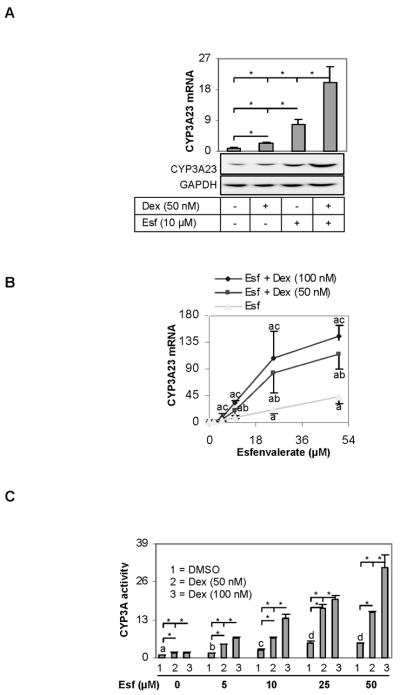Fig. 5. Synergistic induction of CYP3A23 (A) Effect of dexamethasone on the induction of CYP3A23 by Esfenvalerate.
Hepatocytes from Sprague-Dawley male rats (n = 4) were treated with dexamethasone (50 nM), esfenvalerate (10 μM), or both for 24 h. Total RNA was isolated and analyzed for the level of CYP3A23 mRNA by qRT-PCR. Cell lysates (10 μg) were analyzed for the level of CYP3A23 protein by Western blotting. *Statistically significant (p < 0.05). (B) Synergistic induction of CYP3A23 as a function of concentrations of dexamethasone and esfenvalerate Hepatocytes from Sprague-Dawley male rats (n = 4) were treated with various concentrations of dexamethasone (0–100 nM), esfenvalerate (0–50 μM), or both for 24 h. Total RNA was isolated and analyzed for the level of CYP3A23 mRNA (Left) or PXR (Right) by RT-qPCR. Bars with a letter “a” indicates statistically significant difference from DMSO-control; a letter “b” from the corresponding esfenvalerate treatment; and a letter “c” from esfenvalerate alone or esfenvalerate plus 50 nM dexamethasone (p < 0.05). (C) Enzymatic activity of CYP3A23 Hepatocytes from male rats (n = 4) were treated with various concentrations of dexamethasone (0–100 nM), esfenvalerate (0–50 μM) or both for 24 h. Hepatocytes were washed four times with phosphorous-buffed saline and cell lysates (20 μg) were then prepared. Lysates were analyzed for the oxidative activity with a P450-Glo™ CYP3A4 kit and the relative oxidation activity was determined with standard curves generated from various amounts of recombinant CYP3A4. *Statistically significant (p < 0.05), and bars with a different letter indicate statistically significant differences (p < 0.05) among data-points from DMSO- but different amounts of esfenvalerate. .

